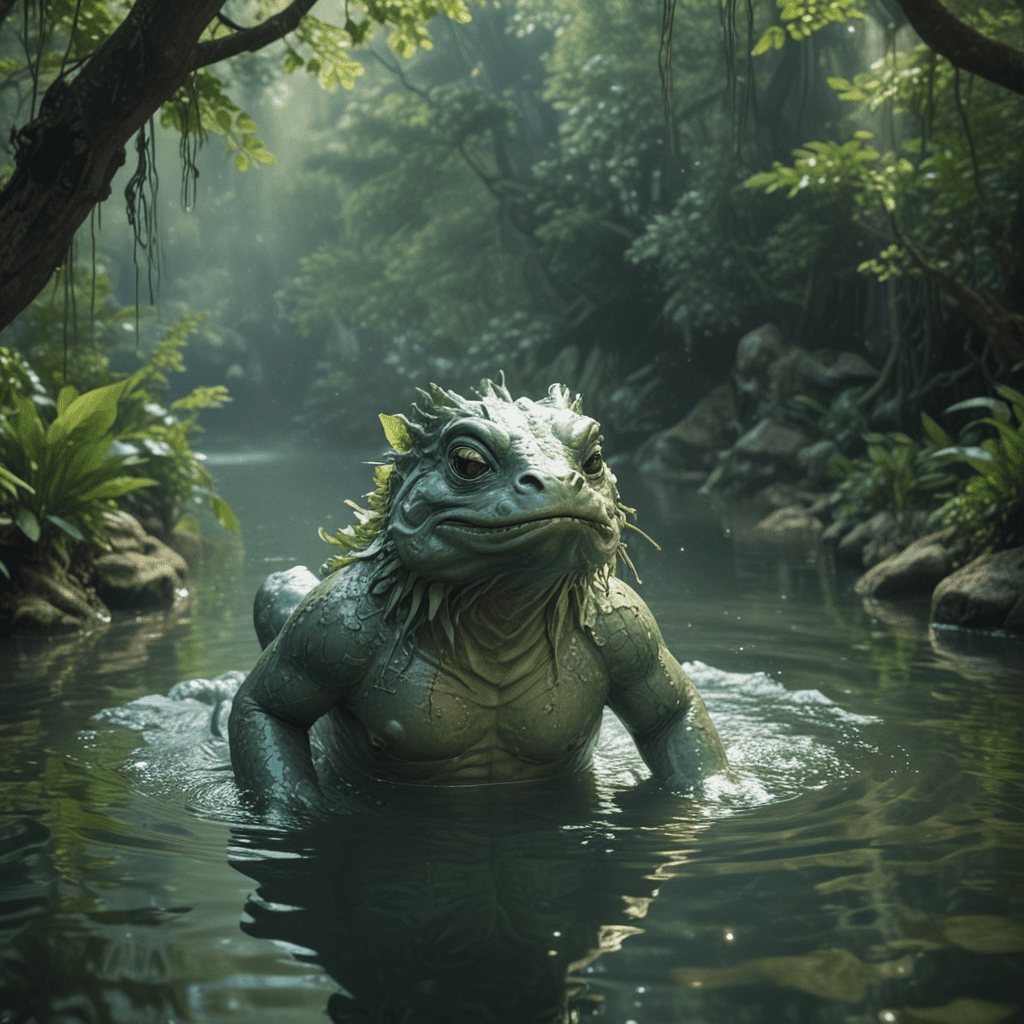The Legend of the Kappa: Water Imps in Japanese Folklore
Introduction: Unraveling the Enigma of the Kappa
The kappa, a mythical creature from Japanese folklore, has captivated imaginations for centuries. Often described as mischievous water imps, these enigmatic beings have become deeply ingrained in Japanese culture. This article delves into the origins, characteristics, folklore, and cultural significance of the legendary kappa, unraveling the mysteries surrounding these fascinating creatures.
Origins of the Kappa Legend
The origins of the kappa legend are shrouded in mystery, with theories ranging from ancient water spirits to mischievous forest goblins. Some believe that the kappa evolved from the mischievous suiko, a water imp mentioned in the Nihon Shoki, an ancient Japanese chronicle. Others trace their roots to the Sanskrit word "kumbhakarna," meaning "one who stays in the water." Regardless of their uncertain origins, the kappa has become an enduring figure in Japanese folklore.
Physical Attributes and Habits
Kappas are typically depicted as reptilian creatures with a humanoid form. They possess webbed feet, sharp claws, and a turtle-like shell on their backs. The most distinctive feature of the kappa is the indentation on the top of its head, filled with water. This water grants them their supernatural powers, making it essential for their survival. Kappas are known for their playful and mischievous nature, often engaging in pranks and tricks, but they can also be benevolent, providing assistance to humans.
Kappa and Water: Symbiosis and Folklore
Water plays a pivotal role in the life of a kappa. It is believed that they reside in rivers, ponds, and lakes, making them guardians of waterways. The water in the indentation on their heads represents their life force and supernatural abilities. If the water spills out, the kappa becomes weakened and loses its power. This vulnerability has led to a common folklore practice of throwing cucumbers at kappas, causing them to bow their heads and spill the water, rendering them harmless.
Mischievous and Helpful Nature of Kappas
Kappas are known for their mischievous behavior, often playing pranks on humans. They may try to pull people into the water or challenge them to sumo wrestling matches. However, they can also be helpful, assisting with tasks like farming and extinguishing fires. Kappas are believed to have a strong sense of honor and will often return favors done to them. This duality in their nature makes them both feared and respected in Japanese folklore.
Regional Variations in Kappa Lore
Kappa lore varies from region to region within Japan. In some areas, they are depicted as mischievous imps, while in others, they are seen as wise protectors of water. In the mountainous regions of Shikoku, kappas are believed to have a monkey-like appearance, with long tails and red fur. In contrast, the kappas of the Tohoku region are said to be large and fearsome, with sharp teeth and a pungent odor.
Kappa as a Cultural Icon
The kappa has become an enduring symbol of Japanese culture. They have been featured in countless folk tales, legends, and works of art. Kappa-themed souvenirs are popular among tourists, and the creatures have even been featured in popular culture, such as anime, manga, and video games. The kappa's unique appearance and mischievous nature have made them instantly recognizable icons of Japanese folklore.
Legends and Encounters: Tales from Japanese History
Throughout Japanese history, there have been numerous accounts of encounters with kappas. Some of the most famous legends include the story of the kappa that kidnapped a young boy and the tale of the kappa that challenged a samurai to a sumo wrestling match. These stories have helped to shape the image of the kappa in Japanese culture, and they continue to be passed down from generation to generation.
Modern Depictions of Kappa
In contemporary Japan, the kappa remains a popular figure in popular culture. They have been featured in numerous films, television shows, and anime series. Modern depictions of kappas often portray them in a more lighthearted and humorous manner, emphasizing their mischievous nature while downplaying their supernatural powers. This has helped to make the kappa more accessible to a wider audience and has contributed to the creature's enduring popularity.
Preserving the Legacy: The Kappa in Contemporary Japan
The kappa has a rich and complex history in Japanese folklore, and efforts are being made to preserve its legacy for future generations. Museums and cultural centers across Japan display kappa-related artifacts and exhibits, and there are even festivals dedicated to celebrating these mythical creatures. By sharing the stories and legends surrounding kappas, we can ensure that these fascinating beings continue to captivate imaginations for centuries to come.
Frequently Asked Questions
1. What is a kappa?
A kappa is a mythical creature from Japanese folklore that is often described as a mischievous water imp.
2. What are the physical characteristics of a kappa?
Kappas are typically depicted as reptilian creatures with a humanoid form, possessing webbed feet, sharp claws, and a turtle-like shell on their backs. The most distinctive feature of the kappa is the indentation on the top of its head, which is filled with water.
3. What is the significance of the water in a kappa's head?
The water in the indentation on a kappa's head represents their life force and supernatural abilities. If the water spills out, the kappa becomes weakened and loses its power.
4. Are kappas harmful?
Kappas are often portrayed as mischievous and playful, but they can also be harmful. They may try to pull people into the water or challenge them to sumo wrestling matches. However, they can also be benevolent, assisting with tasks like farming and extinguishing fires.
5. What is the best way to protect oneself from a kappa?
The most common method of protecting oneself from a kappa is to throw a cucumber at it. This will cause the kappa to bow its head, spilling the water from its head and rendering it harmless.



